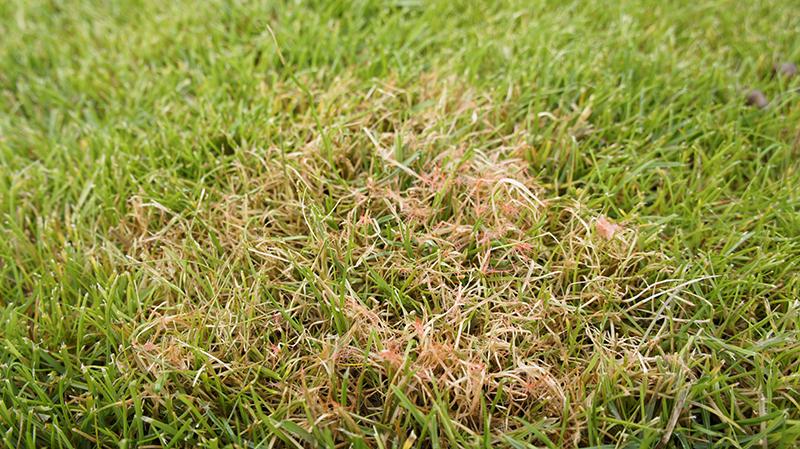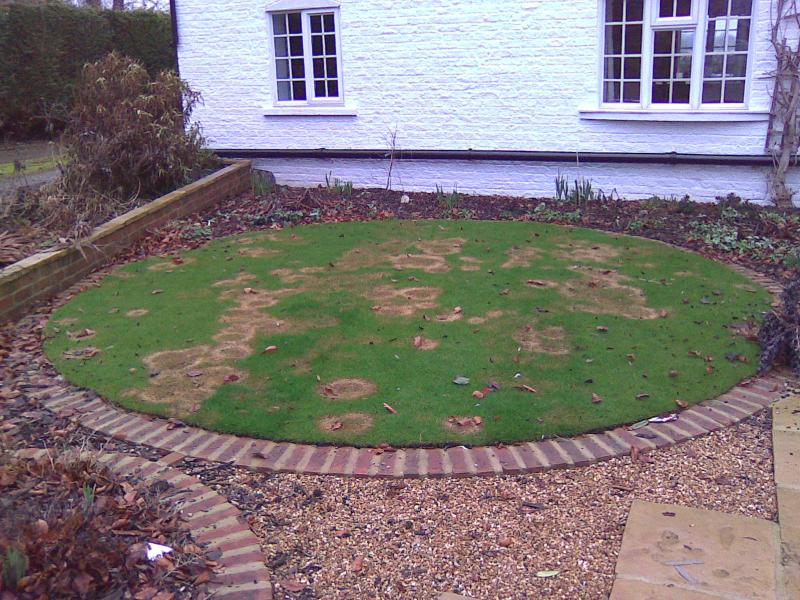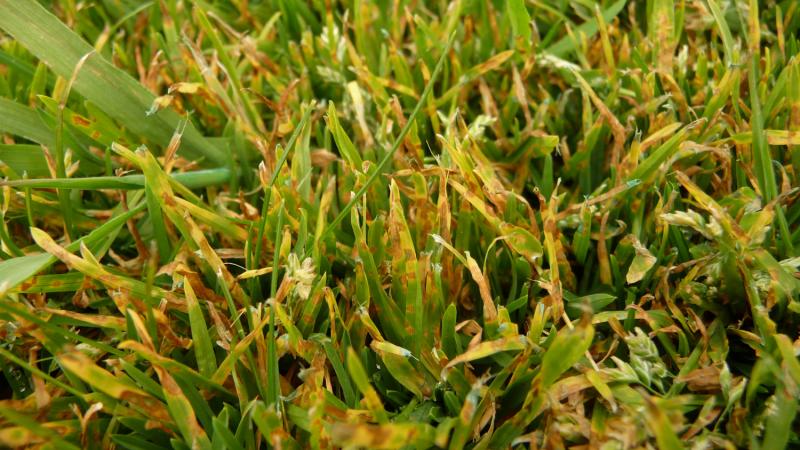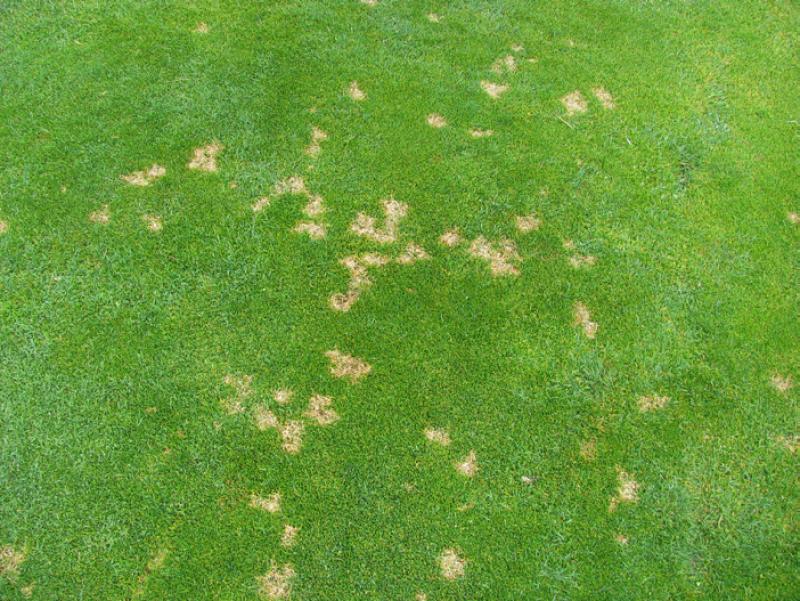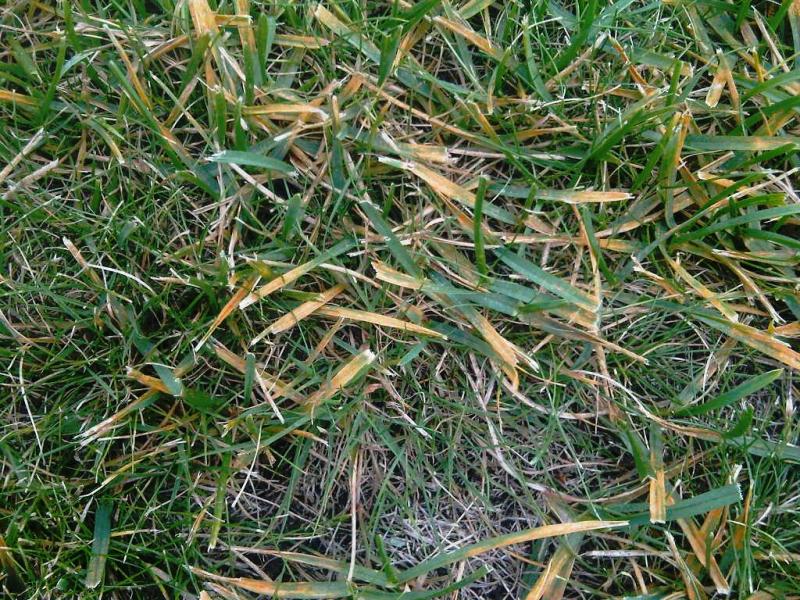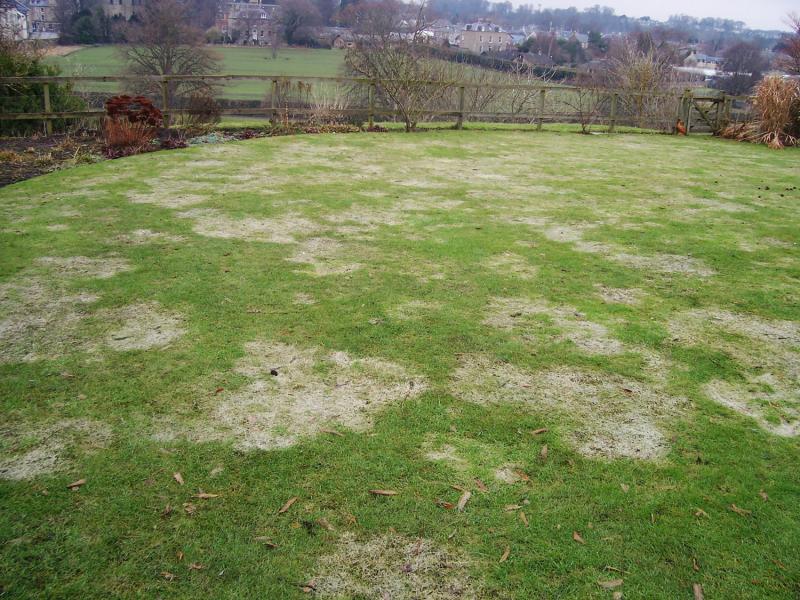
Lawn disease can take many different forms, most of which are caused by fungi that attack the grass, robbing it of essential nutrients needed for healthy growth. Some of the most common lawn diseases include Red Thread, Fusarium, Leaf Spot, Snow Mold, and Rust. These diseases not only cause discolouration, like brown patches in lawns and unsightly patches but can also weaken your grass, making it more susceptible to further damage. In severe cases, lawn diseases can kill the grass altogether, leaving behind bare patches.
What Causes Lawn Disease?
Grass plants become vulnerable to disease when they experience stress, which compromises their ability to fight off pathogens like fungi. Stress can come from a variety of environmental and maintenance-related factors. Some of the most common causes include:
-
Drought and Watering Issues: Insufficient or uneven watering can weaken your lawn, especially during dry periods, leaving it prone to disease. Over-watering, on the other hand, creates a damp environment that can promote fungal growth.
-
Moss: Moss thrives in areas with poor air circulation, excessive moisture, and low light. It competes with your grass for space and nutrients, creating a breeding ground for disease.
-
Soil Compaction: When the soil becomes compacted, it restricts root growth and reduces water and nutrient absorption, leaving your lawn stressed and more susceptible to disease.
-
Incorrect Mowing Practices: Mowing your grass too short makes it more vulnerable to fungal infections. Additionally, using dull mower blades can cause injury to the grass, increasing its susceptibility to disease.
-
Improper Fertilisation: Too much or too little fertiliser can also stress your lawn, creating ideal conditions for lawn disease to take hold. An unbalanced nutrient supply can weaken the grass, making it less resilient against disease.
How Can GreenThumb Help?
At GreenThumb, we believe that a healthy lawn is the best defense against lawn diseases. That’s why we offer comprehensive services to help prevent and treat lawn disease, ensuring your lawn remains lush and vibrant all year round

